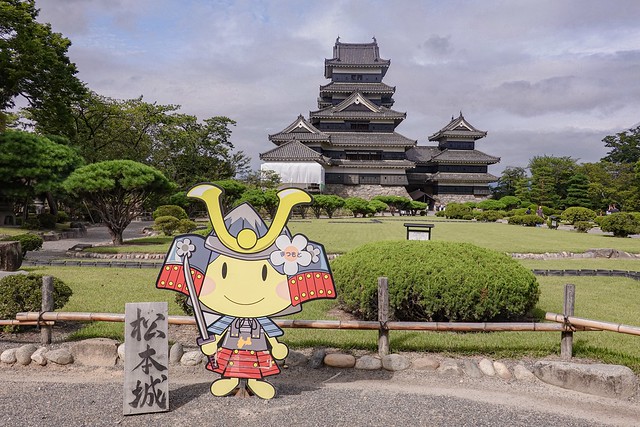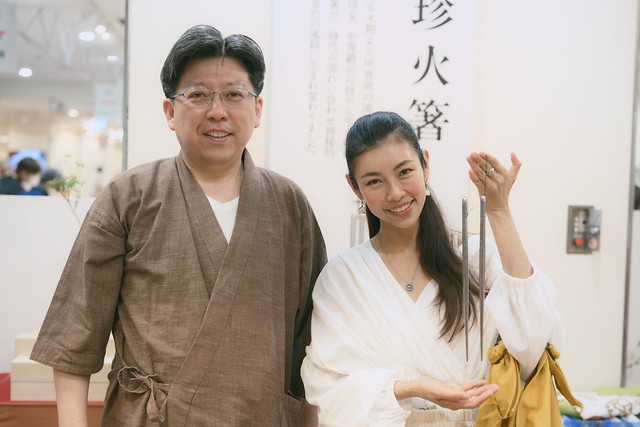
Toyama Gokayama Gassho Village
Where is Chubu Region (中部地方)? Chubu literally means “the central part” and as the name suggests it is located right in the middle of Japan’s main island.
Guess what? Even if you have not been there, chances are you have just completely sped through the whole region dozing off comfortably as the Nozomi shinkansen you were in whooshed from Tokyo Station to Shin-Osaka station. That’s right, Chubu is the area that many travellers often missed out as they shuttle between Kanto and Kansai but will make an absolutely wonderful odyssey if you are willing to spare some time exploring.
Chubu consists of 9 prefectures further categorized in 3 sub-regions:
Tokai Region (東海地方)– Shizuoka, Aichi, Gifu. These 3 prefectures are the areas you will pass through on a Tokaido shinkansen.
Hokuriku Region (北陸地方) – Toyama, Ishikawa, Fukui. These 3 prefectures are facing the Sea of Japan.
Koshinetsu Region (甲信越地方) – “Kos-shin-etsu” are short for “Koshu”, “Shinshu”, and “Echigo”, the olden names respectively for Yamanashi, Nagano and Niigata.
I have already written a self-drive trip guide to Gifu, Nagano and Toyama prefecture through the Tateyama Kurobe Alpine road which you can read here:
And today I’ll be adding new destinations which you can explore in this post, and we are focusing on the 3 prefectures.
First I want to introduce the Tateyama Kurobe Alpine Route, a spectacular journey that brings you through the mountainous Northern Japanese Alps.
Tateyama Kurobe Alpine Route
The Northern Alps is a mountain range that stretches through Nagano, Toyama and Gifu prefectures. Whether you are an avid hikers who aim for the peaks for someone like me who would be just as happy moving along the scenic route at a slow pace, there are many transportation options that suit your needs.
Tateyama Ropeway

One visitor’s favorite is the Tateyama ropeway, which brings you through a stunning view of the alps. This 7-minute trip is especially unique as you get an unobstructed view since the ropeway is without pillars. From late September to mid-October, you may enjoy the scenery of autumn leaves as one of the best views on the Alpine route.
Mikuri Pond

Mikuri Pond is one of the main attractions on the Tateyama Kurobe Alpine Route.
The pond is breathtaking and on a good day you can take stock-photo-worthy photos when the snow begins to melt and you can see Mt Tateyama reflected in the calm azure waters of the pond. If you manage to find the right angle, you may even get to see reflection resembling a heart. Let me know if you can spot it!

Shomyo Falls’ drop boasts to be the tallest in Japan. You can take a leisurely walk from the parking lot to the main water fall and feel its mighty power in therapeutic splashes. In summer time it makes a good hiking spot and in autumn, it is blessed with beautiful maple allure.
Toyama (富山)
Most people start their journey through the alpine route at Toyama prefecture, which was also what I did last year. Before the alpine adventure, I suggest you to spend a couple of days exploring the allure of this oceanic prefecture facing the sea of Japan.
Gokayama Gassho Village (五箇山)

This is the third time I’m writing about this world-heritage attraction, so it really shows how much I adore the century-old village.
It’s truly a unique experience to try home-stay in one of the original Gassho-style guesthouse and take a peek into how the local live and eat in a remote village far separated from the hustle and bustle of the city.
Etchu-Yatsuo (越中八尾)

Time has frozen since the Edo period for this beautifully preserved town in Etchu-Yatsuo of Toyama prefecture. The Suwamachi street was selected as one of the top 100 Japanese streets as you can admire traditional buildings decorated with elegant roof tiles, lattice doors and white walls.
When timed precisely, you also get to enjoy the Owara Kaze no Bon Festival (September 1 to 3) and Kaze-no-bon Night Festival (August 20 to 30), featuring traditional Japanese music instruments such as shamisen and elegant dances that are sure to entertain visitors with an eye for folk cultures.
Toyama’s Gourmet

Toyama Bay is known as a natural fishpond, so you won’t want to miss out the chance tasting fresh seasonal fish that the restaurants in the vicinity offer. Some say Toyama has the best sushi so it’s your chance to see if that holds true.

My favorite delicacy of the prefecture is definitely shiroebi (white shrimp). While this precious delicacy often appear on the counter of a high-end sushi shop, do note that it’s actually pretty widely available in wallet-friendly restaurants too and you may even find it featured in ramen, rice bowls and more!
Nagano (長野)
Nagano is known for its world-class ski resorts and is totally worth spending days to explore once you end your Tateyama Kurobe adventure at Ogizawa Station.
Kamikochi (上高地)
Kamikochi is definitely one of my favorite healing spots in Japan. This highland offers an almost pristine nature, and remember to breathe to your lung’s limit and remember that fresh air is not to be taken for granted. As the world is battling lots of environmental issues, you can be sure to still find a piece of untouched wilderness that which your body and soul will thank you for, right here in Kamikochi.
Matsumoto Castle (松本城)

This magnificent National Treasure of Japan, is one of the the oldest and most complete castles you can still find in Japan these days. I visited the castle last summer and this was the photo I took, but remember that if you plan your trip accordingly, springs offers you an unrivalled view of the castle.

Cherry blossom and castle is such an iconic, poster-worthy must-see of Japan!
Narai-Juku (奈良井宿)

I have talked about Tsumago-juku and Magome-juku in my previous post on the 3 prefectures before. So in additional to these two post towns, I’m introducing Narai-juku, Japan’s longest post town stretching approximately 1km in distance.
Narai-juku is the 34th station of the 69 stations of Nakasendo route (read my previous post to understand more about Nakasendo) located in Nagano prefecture, and just like the other two post towns, this townscape will remind you of the good old days of traditional Edo charm. Enjoy strolling the nostalgic streets that are now lined up with traditional-style inns, souvenir shops, and restaurants. One advantage about the trail is that it is mostly paved and flat so it’s a pretty easy walk for all ages.
Gifu Prefecture (岐阜)
Gifu is no stranger to visitors who has an affinity for Japan as some of the prefecture’s attractions rose to an explosive stardom. While famous spots such as Shirakawago, a world-heritage site and Hida Takayama, a spot featured in mega-hit anime “Your Name” remain traveler’s favorites, Gifu has much more to offer.
Mosaic Tile Museum

The Kasahara-cho district of Tajimi City is Japan’s leading mosaic-tile producer so naturally they would love to share the charm of beautiful mosaic tiles with the world, and therefore, the Mosaic Tile Museum was born in 2016 – Japan’s only museum dedicated to mosaic tiles.

Designed by Japanese architect Terunobu Fujimori, the museum has a unique exterior design. On the first floor, there is a workshop and a museum store where you can experience mosaic tile making. No reservation needed for individual travelers. The work shop takes about 30 minutes and cost JPY500.

The museum is about 20 minutes by bus from Tajimi Station – get off at Mosaic Tile Museum Mae bus stop.
Ena Valley (恵那峡)

No matter which season you pick, Ena Valley is going to reward your journey with stunning vistas.

In spring time, beautiful cherry blossom greets you and in summer time you can enjoy the view of the red Enakyo Bridge against contrasting lush green background. Comes fall, fabulous maple leaves reflect on the lake in all its glory and in winter, birds start to migrate and it’s a great time to revel in bird-watching.
There is also a cruise boat pier, where you can enjoy Ena Valley up close on a 30 minute (around 20km) boat trip. Do look out for curious shaped rocks that dot the river against seasons scenery.
It is about 15 minutes by bus from Ena Station – get off at Enakyo bus stop.
Next trip, Central Japan?
Often a less-travelled region, Central Japan has so many alluring treats in store for those that do decide to give it a visit.
Access: If you decide to fly, the best way is to land at Centrair Chubu International Airport (Aichi Prefecture), and it’s JR from then on!
The Alpine-Takayama-Matsumoto area tourist pass allows you to travel around the Alpine route from Nagoya, and is also an all-you-can-ride travel ticket on all JR normal trains, limited express and the Alpine route.
You can easily purchase the ticket online too. Check out the below website for more off-the-beaten-path attractions recommended by local guides and spark some new ideas for your next trip.
Website:
https://www.alpen-route.com/en/model_courses/















